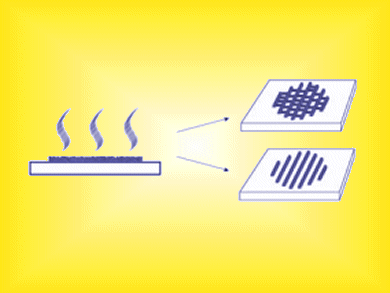Wet-processing techniques are preferable to vacuum-based ones for producing organic-based nanostructures because of lower costs and higher versatility. One problem with current wet techniques is ensuring homogeneity over large areas in reasonable times and at acceptable costs.
Alessandro Fraleoni-Morgera, Sincrotrone Trieste, Italy, has developed a wet-processing method for the creation of large-area, ordered arrays of organic-material-based nanostructures. The technique, named auxiliary solvent-based sublimation-aided nanostructuring (ASB-SANS), required no special measures regarding handling and purity of the substrates, target materials or solvent.
The process involves dissolving an organic crystal that can sublimate and the target material in a low boiling solvent. Evaporation and sublimation remove the template, leaving arrays of nanofibers, connected or isolated depending on the ratio of starting material, on the substrate. Large, proof-of-concept patterns were produced within minutes.

Images: (c) Wiley-VCH
- Fast Fabrication of Large-Area, Nanostructured Arrays from Polymers or Carbon Nanotubes by Wet-Processing
A. Fraleoni-Morgera,
Small 2010.
DOI: 10.1002/smll.201001281




